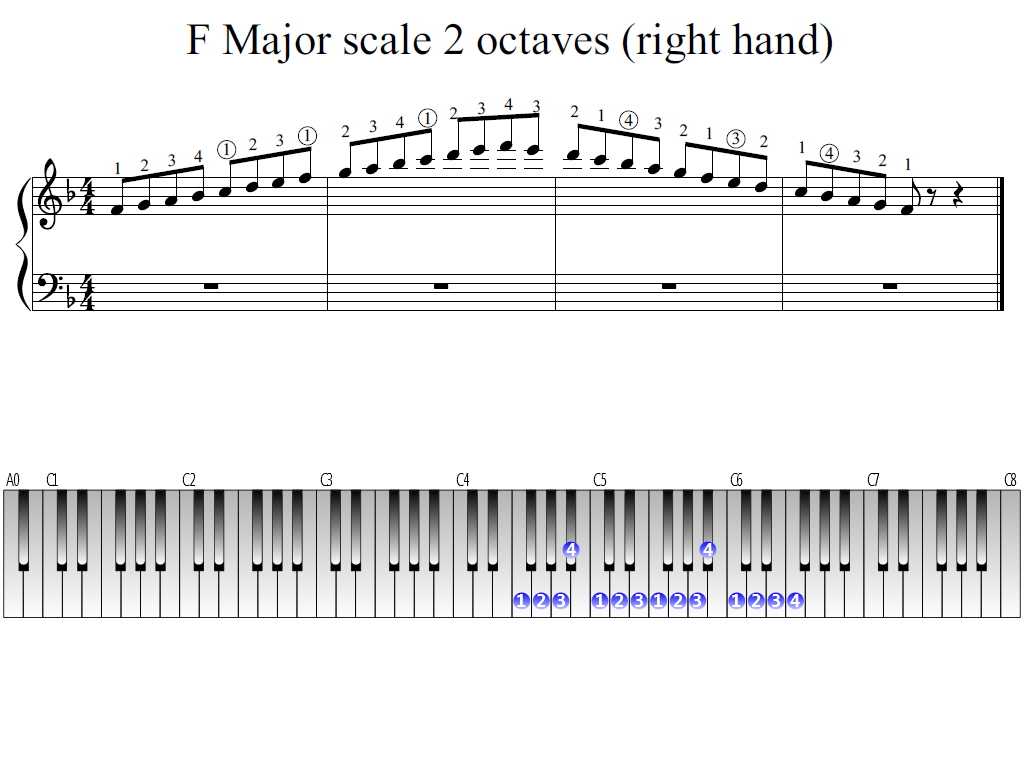
To count up a half step (semitone), count up from the last note up by one physical piano key, either white or black. To count up a whole step (whole tone), count up by two physical piano keys, either white or black. “W” stands for whole step, and “H” stands for half step. They are based on the formula W-W-H-W-W-W-H. Major scales are formed by combining whole step and half step intervals.

Here’s a diagram of the Ab major scale on the bass clef. Here’s a diagram of the Ab major scale on the treble clef.

Highly Recommended: Click here for the BEST piano/keyboard course I’ve come across online.

We already know the first bit from the major chord. This is build off of the 1st, 3rd, 5th and 7th notes of the scale. So if you look at the major chord, this means Ab, C and Eb make the major chord. Major chords are built off the 1st, 3rd and 5th notes of the scale. Knowing the A flat major scale on piano not only helps you to play that and understand the key signature but you can also understand and know the Ab chord (written as Ab). (The order of the first 4 flats spells the word BEAD, so we now have the whole word!) Understand the Ab Chord from the Ab Scale The key of A flat has 4 flats: Bb, Eb, Ab and Db. Now that you know the A flat major scale, you also know the key signature of A flat major. A flat major scale piano fingering for left hand The Key Signature of A Flat Major


 0 kommentar(er)
0 kommentar(er)
